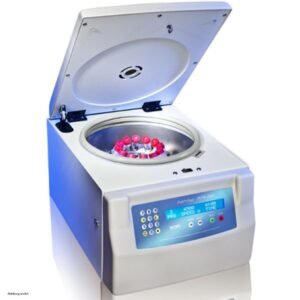Why Use a High Temperature High Pressure Filter for Filtration Testing?
By simulating downhole pressures and temperatures, a high temperature high pressure filter enables you to measure:
The corrected fluid loss (filtrate volume) under HTHP conditions
The mud cake thickness and properties after filtration
The stability, integrity, and behavior of drilling fluids or cement slurries under extreme conditions

Product Overview: PP HTHP Filter Press 175 ml
Model: PP HTHP FP 175
This model is engineered to meet the rigorous demands of filtration testing equipment for both global and Indian drilling projects. Here’s an optimized and enriched description with key features:
| Parameter | Specification |
|---|---|
| Power Supply | 220 V ± 5 %, 50 Hz |
| Power Rating | 400 W |
| Maximum Working Temperature | Up to 232 °C |
| Working Pressure (Mud Cup) | 4.2 MPa (600 psi) |
| Back Pressure | 0.7 MPa (100 psi) |
| Effective Filtration Area | 22.6 cm² |
| Maximum Cup Pressure | 6 MPa (870 psi) |
| Mud Sample Cup Capacity | 175 ml |
| Gas Source | Oil‐ and water‑free Nitrogen or CO₂ |
| Dimensions | 530 × 465 × 334 mm |
| Gross Weight | 36 kg |
Key Features & Benefits:
High heating efficiency & insulation: The heating jacket is optimized for uniform temperature distribution.
Through-hole mud sample cup: Facilitates ease of fluid transfer and accurate measurement.
Robust safety design: Engineered with secure clamps and pressure relief protocols to handle HTHP environments.
API‑compliant design: Meets industry standards for HTHP filter press testing procedures.
Adaptable sample media: Compatible with standard HTHP filter paper, ceramic disks, or cement screens (subject to configuration).
This drilling fluid filter press is built to provide consistent, reliable, and repeatable results under strenuous test conditions.
How the PP HTHP Filter Press Operates
The operation of the HTHP filtration testing procedure with this unit follows recognized API and HPHT protocols. Here is a step‑by‑step procedure in a simplified yet precise way:
Preheat the heating jacket to the target temperature (e.g. 232 °C), using embedded sensors and controls.
Load the mud sample (175 ml) into the cup, placing a fresh piece of filter media (e.g. HTHP filter paper) atop the cell.
Seal the cell, ensuring all O‑rings and gaskets are properly seated.
Apply back-pressure (~100 psi) to inhibit vaporization of filtrate during heating.
Increase test pressure gradually up to the working differential (e.g. 600 psi) while monitoring stability.
Open the flow valve to begin filtration; collect filtrate over a 30-minute period, ensuring the differential is held constant.
Double the final filtrate volume (in many half-area cells) to adjust for full-area equivalence.
Release pressure gradually, cool the cell, and disassemble it carefully.
Measure cake thickness and evaluate cake texture, integrity, and filter cake properties.
Clean all components and prepare for the next test.
In this context, the HTHP filter press 175 ml is a critical tool to replicate downhole high temperature high pressure filter conditions in a controlled lab environment. Drilling Manual+2drillingforgas.com+2
This equipment thus allows engineers and lab technicians to correlate lab measurements with field performance — minimizing surprises during drilling.
Major Components & Design Considerations
The PP model includes the following core elements:
Principal machine body and frame
Mud sample cup (with or without through-hole)
Heating jacket with insulation
Pipe-manifold assembly (for pressurization and back-pressure)
Tee coupling package
Filtrate receiver / collection assembly
Electrical temperature-control system
Safety valves, clamps, gaskets, and O‑rings
Design considerations for optimal performance include:
Material compatibility (resistance to corrosive drilling fluids)
Precision temperature control (± 1 °C)
Seal integrity under cyclic pressure
Ease of maintenance and calibration
Because the HTHP filter press 175 ml is intended to mimic real drilling stress conditions, all components must be manufactured and tested to high quality standards.
Safety & Maintenance Guidelines
Safety Best Practices
Always release residual pressure fully before opening the cell to avoid fluid ejection.
Only use approved gases (Nitrogen or CO₂) — never oxygen or reactive gases.
Ramp pressure gradually, avoiding shock to filter media or cell components.
Monitor the heating jacket closely to avoid overheating beyond the rated temperature.
Use full PPE (gloves, goggles, lab coats) at all times during operation.
Routine Maintenance
Inspect all O‑rings, hoses, and seals for wear or leakage before each test.
Regularly clean and lubricate moving parts, including clamps and valve stems.
Replace filter media (HTHP filter paper or disks) between each test to avoid contamination.
Periodically check wiring, switches, and temperature controllers for faults.
Store the instrument in a clean, dry environment when not in use.
Adhering to these practices ensures that your HTHP filtration testing remains accurate, safe, and reliable.
Real-World Applications & Uses
The PP HTHP Filter Press 175 ml is indispensable in a range of petroleum, lab, and research contexts:
Fluid loss measurement for oil- or water-based drilling fluids under simulated downhole conditions
Cement slurry filtration testing to assess permeability and slurries under heat/pressure
Mud cake property evaluation (thickness, permeability, compressibility)
Petroleum research labs and academic studies
Quality assurance for drilling fluid manufacturers
In sum, this product bridges the gap between lab-based filtration testing equipment and field realities, providing more trustworthy correlations and data insights.
Why Choose the PP HTHP Filter Press 175 ml?
Here’s what sets this model apart in the global and Indian markets:
Precision & reliability: Engineered for repeatable, accurate results in demanding HTHP environments.
API compliance: Designed according to international filtration and drilling standards.
Robust design for India’s climates: Built to perform in Indian labs and challenging site conditions.
Global support & delivery: We offer worldwide shipping, technical support, and customization.
Balance of technical & commercial focus: While it serves rigorous engineering labs, the ROI is compelling for field monitoring, product development, and quality control.
Whether you’re benchmarking drilling fluids or ensuring your lab instrumentation is best-in-class, this HTHP filter press 175 ml is a smart choice.
Conclusion
Contact Us
We provide worldwide delivery, custom configurations, and technical support tailored to your operational needs.


